Abstract
Heat destruction of types B and E Clostridium botulinum spores on whitefish chubs was observed to be dependent upon the relative humidity (RH) in the chamber in which fish were heated. Experimental conditions were designed to simulate those attainable in commercial fish-smoking plants. Low numbers of type E spores were destroyed with regularity, within 30 min, on fish which were held at an internal temperature of 77 C (170.6 F) in an atmosphere of at least 70% RH. However, an internal temperature of 82 C (179.6 F) and a minimum RH of 70% were required to destroy several hundred thousand type E spores. Quantitative estimates of spore destruction were arrived at with a modified most probable number procedure. Type E spore populations were reduced by 2 to 4 logarithms at 77 C (170.6 F), by 5 to 6 logarithms at 82 C (179.6 F), and by more than 6 logarithms at 88 C (190.4 F) when fish were heated in an atmosphere of 70% RH. A 5 to 6 logarithm reduction of spores was also observed when fish inoculated with type B spores were processed at 82 C (179.6 F) in an atmosphere of 70% RH.
Full text
PDF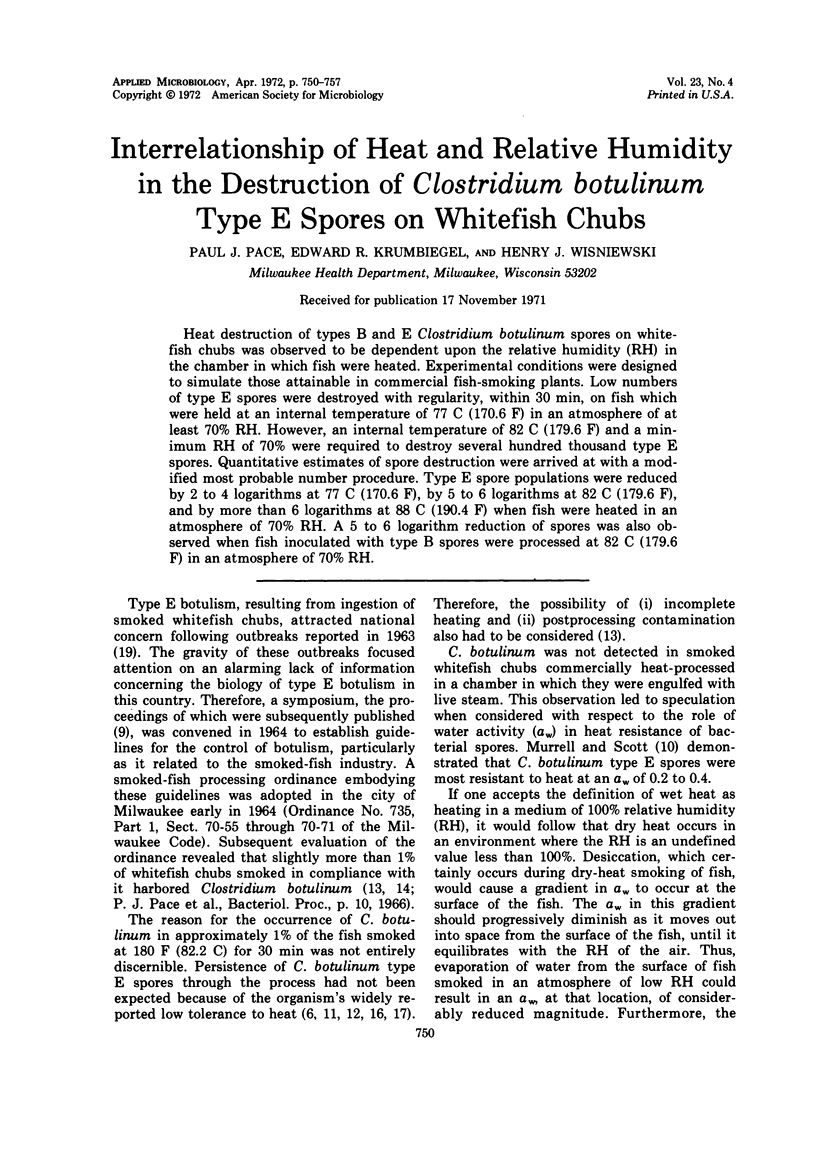
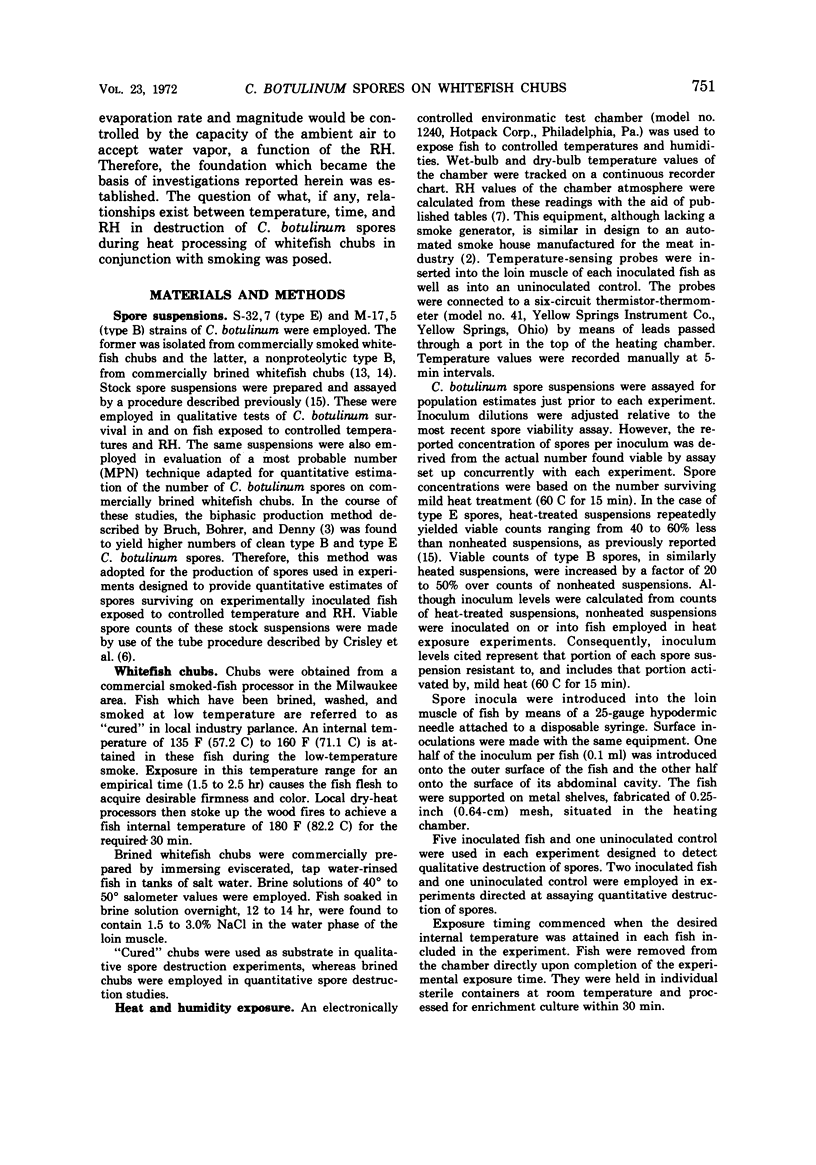
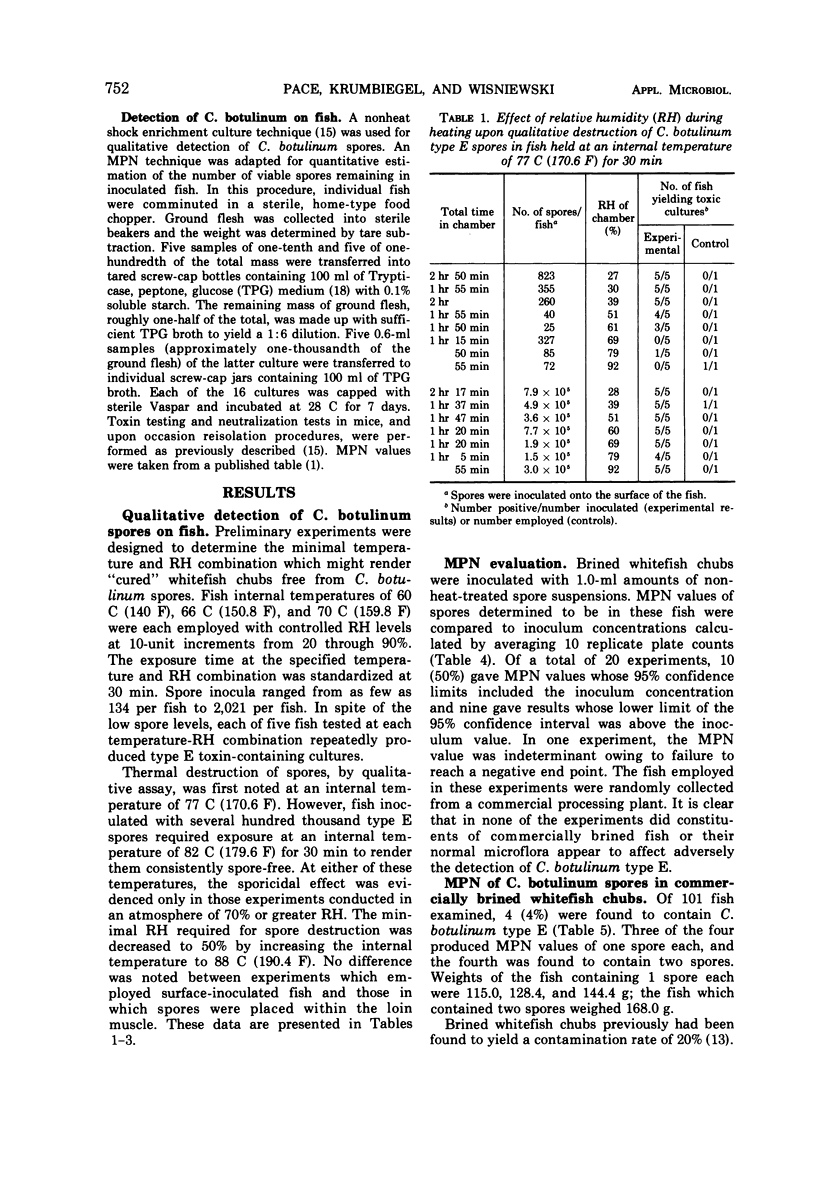
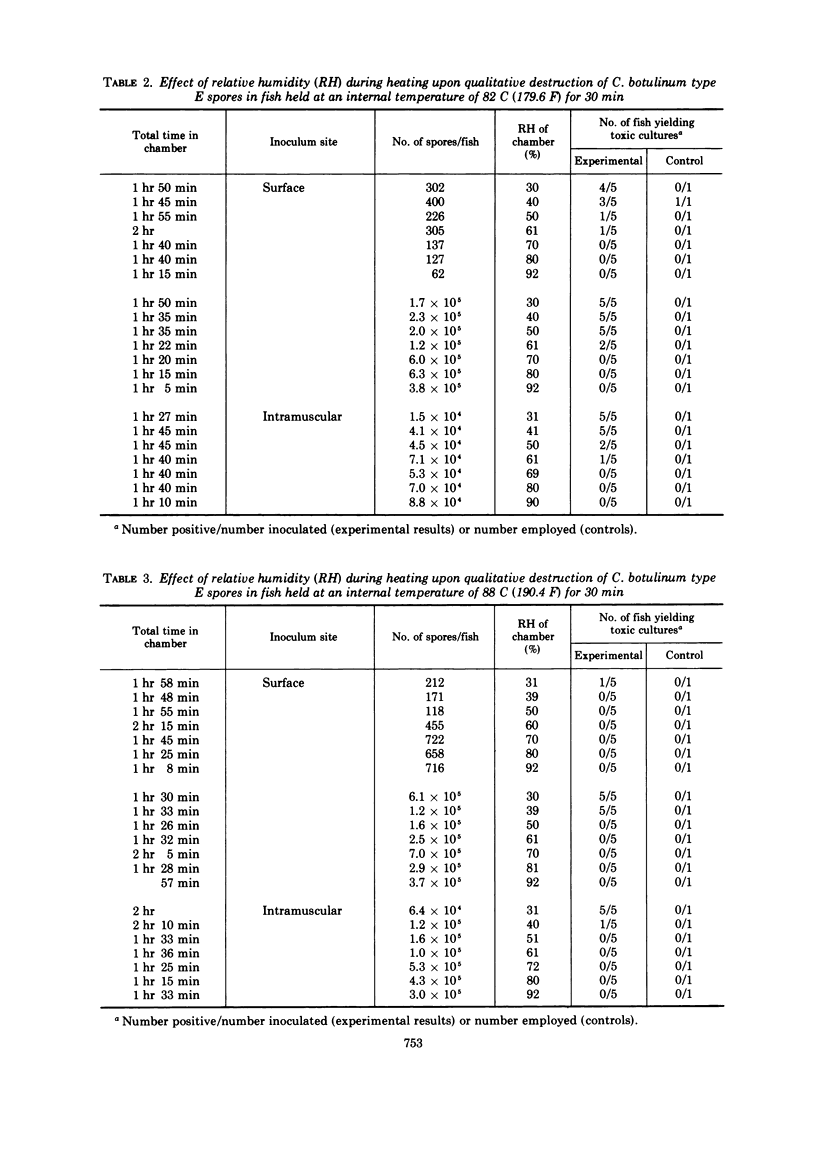
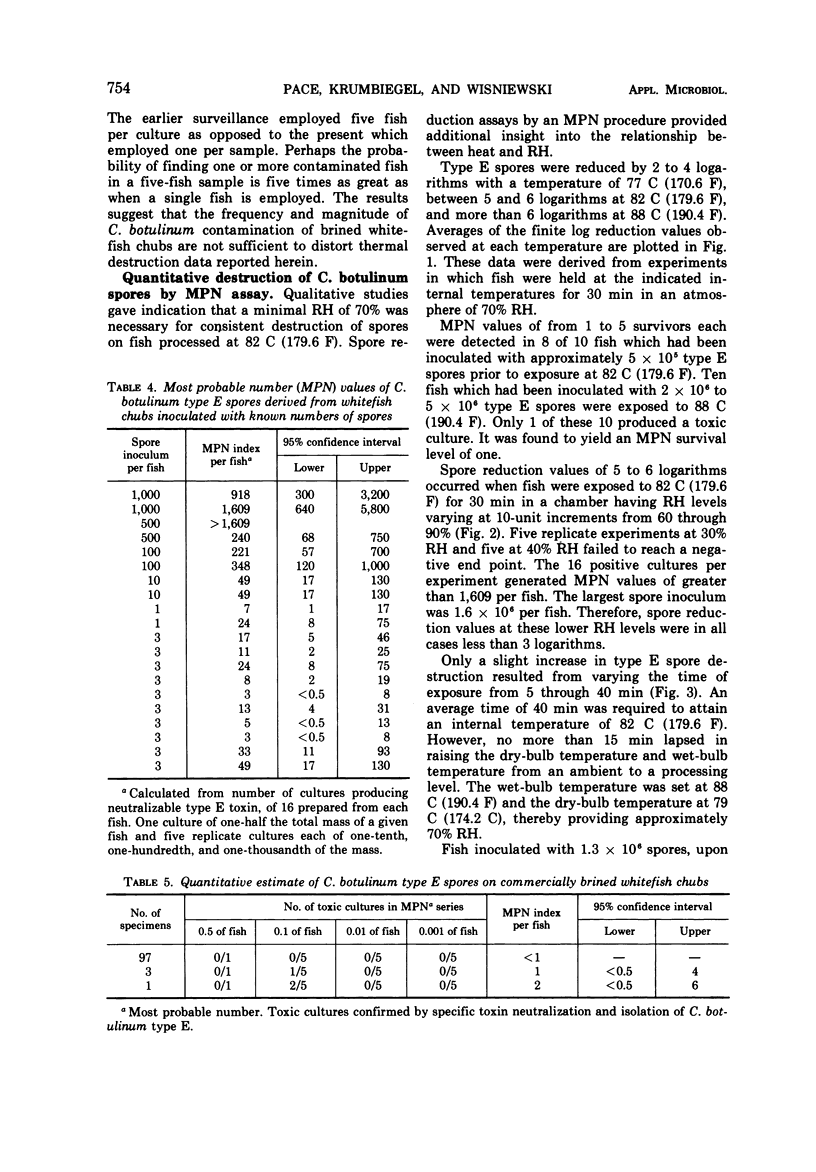
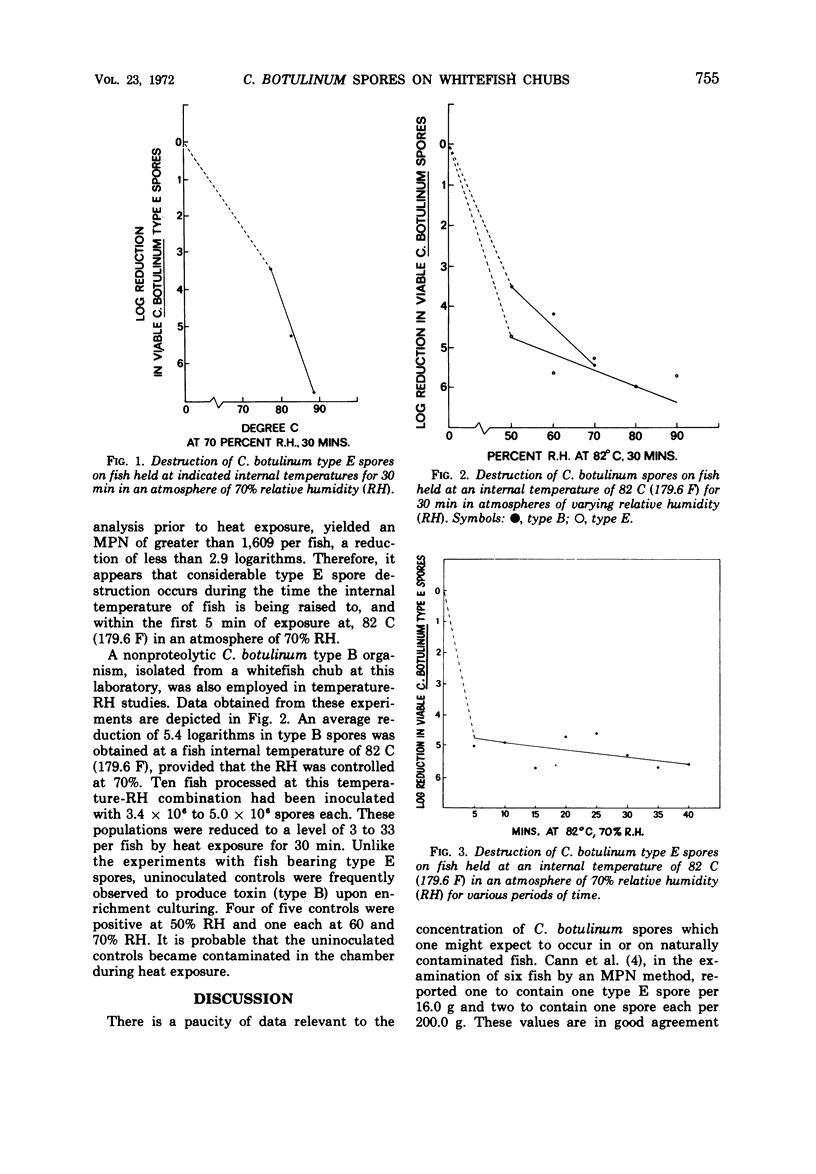


Selected References
These references are in PubMed. This may not be the complete list of references from this article.
- Christiansen L. N., Deffner J., Foster E. M., Sugiyama H. Survival and outgrowth of Clostridium botulinum type E spores in smoked fish. Appl Microbiol. 1968 Jan;16(1):133–137. doi: 10.1128/am.16.1.133-137.1968. [DOI] [PMC free article] [PubMed] [Google Scholar]
- Murrell W. G., Scott W. J. The heat resistance of bacterial spores at various water activities. J Gen Microbiol. 1966 Jun;43(3):411–425. doi: 10.1099/00221287-43-3-411. [DOI] [PubMed] [Google Scholar]
- Pace P. J., Krumbiegel E. R., Angelotti R., Wisniewski H. J. Demonstration and isolation of Clostridium botulinum types from whitefish chubs collected at fish smoking plants of the Milwaukee area. Appl Microbiol. 1967 Jul;15(4):877–884. doi: 10.1128/am.15.4.877-884.1967. [DOI] [PMC free article] [PubMed] [Google Scholar]
- Pace P. J., Wisniewski H. J., Angelotti R. Sensitivity of an enrichment culture procedure for detection of Clostridium botulinum type E in raw and smoked whitefish chubs. Appl Microbiol. 1968 May;16(5):673–679. doi: 10.1128/am.16.5.673-679.1968. [DOI] [PMC free article] [PubMed] [Google Scholar]


